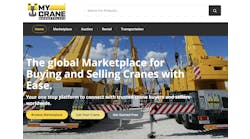What is new in your software and technology?
Longmire: We’re excited to announce the release of AlertSign, our newest electronic signature feature. Alert users can not only capture digital signatures, but send payment links, and accept credit card payments. The links can be sent from Alert’s Document Center, from the ticket itself, from Dispatch, and to the yard. In addition to AlertSign, Alert Rover can inbound/outbound tickets and take and store photographs.
We’ve also created a new credit card processing fee feature so that our rental stores can easily recoup some of their credit card fees, as well as a feature to seamlessly schedule future rates.
What effects has AI had on your software and technology and what potential do you see going forward?
The use of AI is everywhere, and this is a conversation that we have been having with our team and our clients over the past few years. The challenge in the rental industry is that there are so many moving parts that impact fulfillment, scheduling, deliveries, etc., that it is difficult to take the ‘person’ out of the equation. That’s not to say that tools that leverage AI aren’t already being used in everything from GPS and routing to automated responses and processes from websites – it’s already here.
How important is integration of all of your systems?
All of Alert’s systems are inherently integrated. Alert is generally agnostic towards outside technology such as telematics and integrates easily. We also have integrations to other specialized software packages such as Rouse Analytics, GPS for dispatch, CRM, multiple accounting packages, RFID, and much more. Integration simplifies the way Alert users can use the system, and any time we can reduce friction and simplify processes for our clients we leverage the opportunity.
What new trends in technology do you expect in the foreseeable future?
Everything is becoming more mobile. Alert’s features such as Mobile Reports and Alert Rover make rental much easier to accomplish on the go. Having a secure way for outside salespeople, drivers, and managers to access their system enhances everyone’s productivity and profitability.
What are the most important contributions telematics makes to a rental company and how challenging is it to integrate telematics with a rental management operating system?
Thanks to the AEMP standard, it isn’t difficult to integrate to Alert at all! Our clients can choose the telematics company that is the best fit for their business (whether it’s price or features) and seamlessly integrate with Alert. While Alert itself is focused on capturing meter readings and locating equipment, telematics users can use technology to enact features such as geo-fencing to know that their investments are protected.
What are the main concerns and issues customers in the rental industry are asking about in terms of software being able to solve their problems and help them operate more efficiently? Anything in particular that rental staff are asking for?
The ability to update their data/renumber their data to accommodate acquisitions as well as for ease of data cleanup and maintenance is an important discussion point for rental stores with their ERP provider in today’s environment. Similarly, rental software should be able to provide metrics and KPIs on demand and in a dashboard format, as well as exporting data to business intelligence programs.
What are the most important contributions telematics can make to rental companies?
From our perspective, the most important contribution a telematics company can make is to conform to the AEMP standard so that the ERP system can plug-and-play with it. When protecting your equipment with telematics, ARA insurance (as well as other insurers) will often waive a deductible in the event of a theft. (Having equipment registered with NER is also a great way to accomplish this – and most ERP systems will generate reports to send to NER.)






